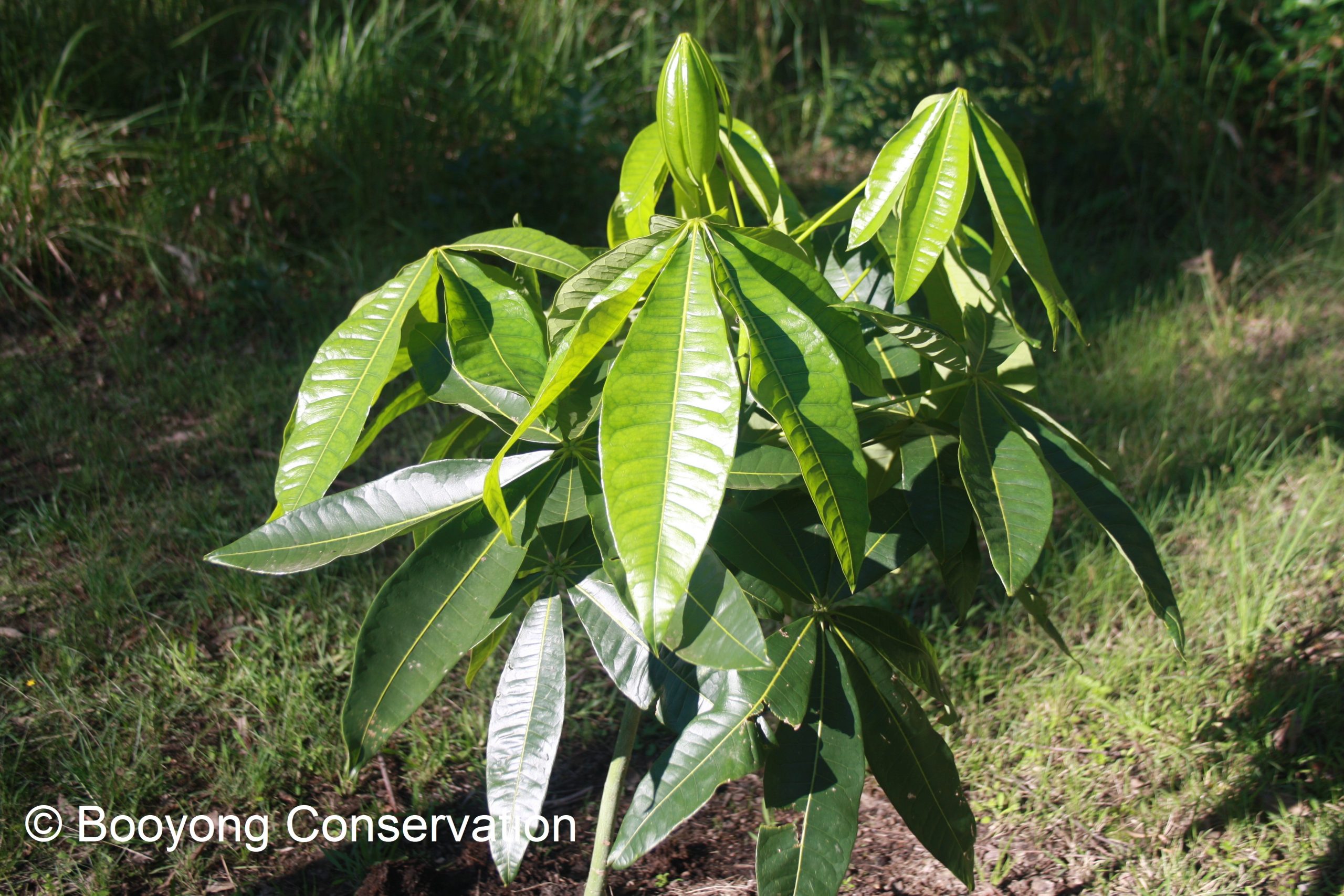The Malabar Chestnut (Pachira glabra) tree has been exceptional during the recent drought, it’s surprisingly remained lush and green with very little water. It is said to have large, fragrant ornamental white flowers and is often referred to as a Money tree that brings wealth to it’s owners.
Growing – This is a fast-growing semi-deciduous tree that grows well in the mid north NSW coast, but prefers subtropical areas in well drained soil. It is sometimes also referred to as a Saba Nut and is grown mainly for it’s edible seeds. Flowers are self-fertile and fruit comes in the form of a pod and measures up to 30cm in length. It will take 4-5 years to flower and ours was planted in 2019. We expect the tree to grow 5-10 metres high and 3m wide, so it’s perfect for a rural area.
Care – This tree can also be grown as an indoor or outdoor potted plant. When we transplanted it into the food forest recently, we were surprised by it’s round and compact root ball system. Whilst it proved hardy during our recent drought, this plant does not like frost and we have recently protected it with shade cloth accordingly. It prefers to be grown in full sun to partical shade and requires moderate watering. If leaves are contorted it is either a lack of light or an unsuitable water and yellowing leaves indicate excess water, brownish indicates a lack of water! In spring and summer, liquid or slow release fertilizer can be added every two weeks, especially if you decide to keep it in a pot.
Pruning – Not necessary but you can give it a light pruning in the spring by cutting just above the bud.
Companion Planting – Unknown – As we observe any pests and diseases on this tree, we will explore companion planting options.
Pests and Diseases – Unknown
Harvest – The seedpods will change from green brown when ripe (similar to the pecans) and we will expect fruits to be harvested in Nsw from February onwards. I imagine we will also need to ensure we get some of the nuts before the possums.
The seeds can be eaten either toasted or raw and taste a little like peanuts apparently. In addition, seeds can be ground and used as a substitute for flour in baking and fried in oil. Young leaves and flowers can be cooked and eaten. Like many nuts they keep for a long period if stored correctly in a cool, dry spot.
Propagation – This plant is self-pollinating and can be grown from seed.
Health Benefits – It is said that the bark can be used medicinally for treating headaches and stomach complaints and an infusion of crushed leaves used for treating burning sensation in the skin.
